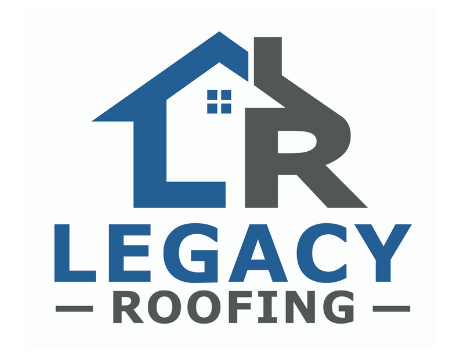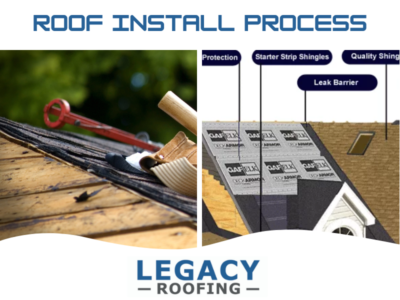Are you wondering what the roof installation process looks like?
Your roof is the bread and butter of your home’s protection. It is a prized possession that is often overlooked but protects the structural integrity of your entire house. And as valuable as it may be, all good things come to an end, and getting a new roof installed is only a matter of time.
If you’re like most people these days, you probably don’t have the slightest idea of the steps required for roof installation, and you have a good reason not to, ultimately. Leave the roofing work to the roofing experts!
Today, we will fill you in with everything you need to know about the new roof installation process!
First, here are telltale signs that you need a new roof installation:
Identifying the signs that you need to install a new roof is pretty easy!
First, take a look at your old roofing materials and examine for some of the following:
- Missing shingles
- Wear and tear,
- Discoloration,
- Unevenness, or
- Water damage from leaks.
Those are the pretty obvious signs, but some signs, such as rotting wood decking and fascia boards due to built-up moisture, can be harder to identify. Whether you can see it or not, a periodic roof inspection is highly recommended to assess the situation of your roof.
New Roof Installation Methods 101

1. Setting the Scene
The first step for installing a new roof is to get things ready. We install tarps and prepare the area around your home for the initial tear-off of your old roofing materials.
After things are ready, we get to work, which includes removing existing roofing materials, including but not limited to shingles, valley flashing, and drip edge if applicable. Check for roof damage and, if necessary, make initial repairs. We will identify if roof decking needs replacement and use plywood boards to build a solid foundation. Installing roof decking is extra so this is always communicated prior to it being done.
2. Install Underlayment
The next step is to install the roofing underlayment (think roofing felt), which could be an ice and water shield/ice guard membrane or tar paper (also called felt paper – helps increase the roof’s fire rating) over roof decking for extra protection from the elements in order to prevent ice dams and therefore water leaks. Be sure to give a watertight seal with caulking. This is also when we install the drip edge in the eaves of your roof.
3. Account for Ventilation

It is important to ensure your attic is properly ventilated for a high-functioning roof. Install a ridge or gable vent for air circulation to prevent ice damming and temperature control. We install your ridge vent, ridge caps, vent caps, pipe collars, and more once the shingles (step 5) are complete! Some of this work is done prior to roofing asphalt shingles installation.
4. Install Flashing
Over joins installed valley flashing, step flashing/dormer flashing near where your roof and any wall meet, and a drip edge around the roof edge (bottom edge and lower edge) over the underlayment. Where there may be a water leak, like around chimneys, skylights, or vents of any kind, metal flashing with a tight seal will do the job!
5. Install roof shingles or roofing material

The shingle installation method consists of creating an overlapping pattern, secured by appropriate nails to go through multiple layers of shingles, reducing the visibility of all the exposed nails in the initial step. Starter shingles, designed for the first row, serve as an additional water shield in between the seams of your shingles.
Keep in mind that longer nails are needed for ridge cap shingles for proper penetration. Tab shingles should be aligned from the eaves to the peak along ridge vents. The adequate assemblage for shingles and roofing material used will require professional expertise. There are specific nail patterns with each install step of shingles. This is why treating your roof as a DIY project is not recommended.
6. Clean up!
Use caulking for a watertight seal if any exposed nails are in sight. Any falling debris as a result of the setting the scene is sure to clean up and properly discarded. Afterward, give your roof time to settle and dry; you should be ready! Sometimes homeowners will replace their gutters at this point.
New Roof Info ↗
See and learn more about the Legacy Roofing roof replacement process!
Roof Pricing ↗
Learn about the pricing model and cost guide for a new roof!
Roofing FAQ ↗
Get to know more about the most frequently asked roofing questions!
Roofing Materials
Roofing materials come in all shapes and sizes to suit your roof’s needs, and while supply and demand can influence their availability, here are some ones that are common in the marketplace:
- Asphalt shingles ⬅️These are the most common and top pick for almost all homeowners.
- Standing steam metal roofs
- Other metals (aluminum, zinc, copper, galvanized steel)
- Wood shakes
- Clay and concrete tiles
- Solar Roof Tiles
The average cost of the roof installation process:
The roof installation price will differ based on the roofing material you select, the square footage aka “Square” or size of the roof project, labor, and availability of supplies (supply and demand).
According to Forbes, the national average cost of a new roof is ~$8,000, in between $5,000 and $15,000. The average roof price has increased for single-family homes due to shingle prices increasing.
On average, the team here at Legacy Roofing of Idaho will replace a roof for Approximately $9,000 to $14,000 in the Boise area. This includes tearing off the old roof, purchasing the shingles, and installing the new shingles.
➡️ Read out the entire roof pricing guide here if you have a cost about pricing!
Where can you help me get a new roof installed correctly?
Finding a professional roofing contractor who can help ensure that your new roof is installed correctly and suits your roof’s needs is important and takes precedence. Any roofing project requires extensive knowledge and expertise, so there should be no DIY considerations.
A simple search for a roofing company in your area can go a long way, always keep local for quality control based on the context. Put the numbers in your favor, compare and contrast pricing and services, and you’ll find the right one for you!
The Final Word:
The roof installation process is no laughing matter! It requires skill and is not always the easiest thing to put together. Installing a new roof is your top priority when the opportunity presents itself because an old roof with its old roofing material and all the warning signs mentioned above is a ticking time bomb. Always be proactive!
If your existing roof is not cutting it and you want to swap it for a new one, feel free to give us a call, and we will be more than happy to see what we can do to best serve the needs of your home!


 4 Types of Metal Roofs & What to Know
4 Types of Metal Roofs & What to Know